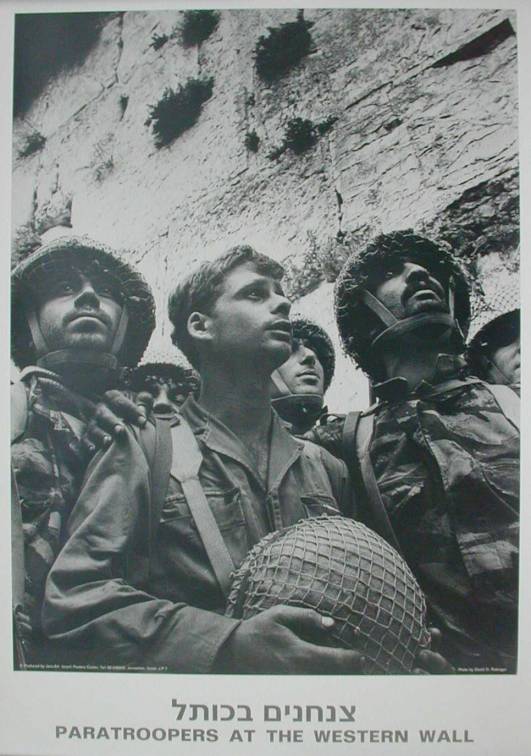 Tonight marks the 50th anniversary of the liberation of the Old City and reunification of Jerusalem by Israeli forces in the Six Day War. That event marked the first time that Jerusalem and its holy places had been under Jewish sovereignty in 1900 years.
Tonight marks the 50th anniversary of the liberation of the Old City and reunification of Jerusalem by Israeli forces in the Six Day War. That event marked the first time that Jerusalem and its holy places had been under Jewish sovereignty in 1900 years.
And yet, when the war started, taking the Old City was on the minds of very few Israeli Jews. Certainly not on the mind of Moshe Dayan, newly-installed Minister of Defense. Certainly not on the minds of the troops.
Jordanian artillery had been shelling the western half, the Jewish half, of the city as well as part of the coastal plain farther north, since the start of the war, but the Israeli government felt that it could more or less overlook this. Jordan’s British-trained Arab Legion was among the best-led and most disciplined of the Arab armies, and it had been supplemented by some crack Egyptian units. For Israel, the main front was, as in 1956, the Sinai, and it simply didn’t have the resources for a two-front war.
Only when Jordan moved to take over Government House, a UN post guarding the road to the southern entrance to Jerusalem, did Israel feel that it might have to move.
Even then, the Old City was off limits. The orders were to take the high ground surrounding the city, from where the Jordanian artillery was firing.
Dayan, while not religious, felt a deep, profound historical ownership of the land, and wanted the Old City back as much as anyone. His worries were twofold. First, the density of religious sites and population was such that a firefight could end up killing a lot of civilians, and damaging those sites. Bullet holes in the Church of the Holy Sepulcher or mortar rounds ending up in the side of Al Aqsa would be objectively bad, and would also likely provoke a reaction on the part of the rest of the world.
That let to Dayan’s second concern. He had seen how military victory in 1956 had been turned into political defeat, when Israel had been forced to surrender the Sinai in return for useless UN peacekeeping guarantees. He feared to blow to Israeli morale should they take the Temple Mount and Western Wall only to be forced to give them back.
In the end, air power proved militarily decisive. After a difficult night of confused fighting, Israeli planes pounded the Augusta Victoria Ridge for much of the morning before the troops slogged up the hill to take it. When they reached the summit, the Jordanians had fled, and with no fire coming from inside the Old City, it was reasonable to believe those troops had fled as well. This mitigated Dayan’s first fear, and he gave the order to take the Old City.
As for Dayan’s second fear, it wasn’t realized either, at least not immediately. But one need only look at UNESCO and the Arabs and UN Resolution 2334 to know that they have not yet surrendered the idea of driving the Jews from their home.



